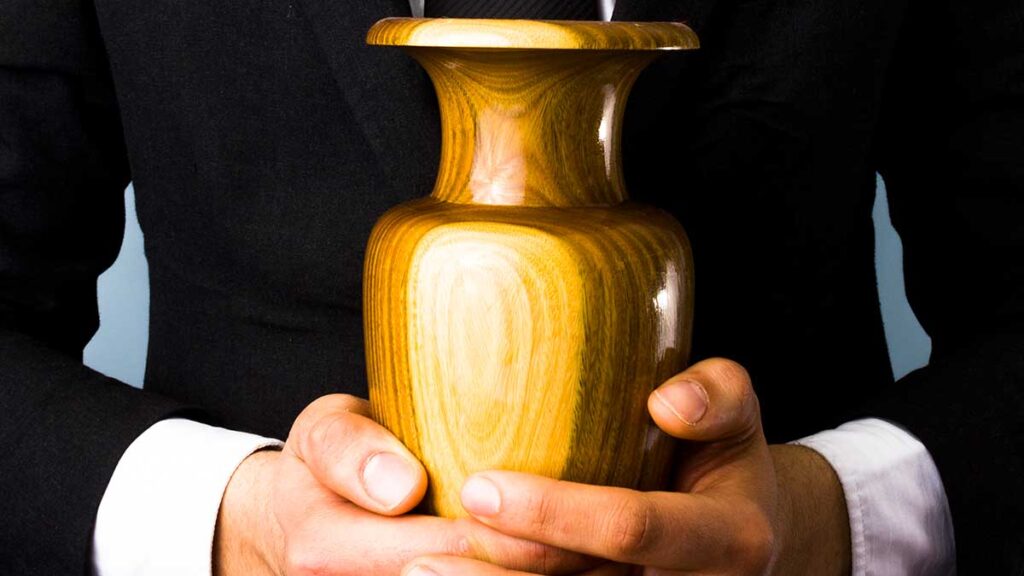Over the years in the funeral profession, we have witnessed an increase in the options of disposition. In the late ‘60s, 96% of the population elected for traditional body burial in a cemetery. Meanwhile today the population is nearly split 50/50 with cremation taking the lead in most areas. Regardless of the method of disposition chosen, some things remain the same: tradition, ritual and an overall respect of the deceased. Very rarely do we find individuals today wanting to simply make a loved one disappear after a passing at the cheapest and most uninterrupted means possible. Rather, we see families respecting the life lived through a public act of love by offering a time of remembrance or religious ceremony, perhaps even surrounded with traditions or religious rituals. In a recent trip to Trinidad with fellow undertakers, we witnessed a method of disposition that honored a life lived through an act of love and respect in a way that left us amazed.
Trinidad is an island within the Caribbean that is known for its rich cultural diversity and unique traditions. When a resident of Trinidad passes away, they generally have three options available: traditional ground burial, indoor cremation (exactly the way we do things here in the states) and outdoor cremation. Yes, an outdoor, open air, cremation process rooting from various ancient cultures and civilizations is still being carried out today. It was shared that the act of cremation on a funeral pyre holds deep religious, spiritual and cultural significance, especially within the Hindu faith, reflecting the beliefs of the afterlife, the transience of human existence and the return of the body to the elements from which it came.
This open-air cremation option is very similar to the ancient ritual the Vikings used to send their departed to the afterlife. The cremation itself takes place in designated open-air, park like facilities, often near a body of water, atop a hand built wooden funeral pyre. The outdoor cremation process is accompanied by religious rituals and customs that honor the deceased and their journey to the afterlife. A small fire is built beside the pyre with involvement of the family and religious figureheads. After the deceased’s casket is placed into the pyre, family members and close friends use ceremonial sticks to transfer the fire onto the pyre. Meanwhile, the undertaker tends to the pyre to ensure the cremation process is completed with efficiency and respect. At the conclusion, after four to five hours, the remains are collected by the undertaker and escorted to the small river adjacent to the outdoor cremation facility and scattered into the waters. The ceremonial space is then thoroughly cleaned and prepared for the next time it is needed.
This method of cremation is not solely about bidding farewell to the departed, but about uniting the community and providing emotional support to the grieving family. The entire process is communal, with friends and family members coming together to offer condolences and assistance. The overwhelming presence of a support network during this time for those who are grieving reflects the collective strength of Trinidad’s close-knit communities and overall respect to a life lived.
While this process of disposition seems extremely unique to some, it was the act of love during the process and complete acceptance of the loss that gave us pause. The sheer level of respect of the deceased, their life journey and the onlooker’s acceptance of the loss was something that was present throughout the process. The hearses were decorated in flowers and strings of memorabilia to showcase this person’s life. Leading the hearse was a lead car with an enormous speaker on top of it playing Caribbean music and religious hymns. Residents came out of their homes, pulled to the side of the road, and stood in attendance respecting the individual which may have been unknown to onlookers.
Overall, this method of disposition embraces tradition, showcases ritual and ultimately honors a life lived with love and understanding in a way that can be truly defined as a final farewell. This disposition process demonstrates that although life does come to an end for us all, respecting a life lived can always live on.
Ryan, owner, supervising mortician and preplanning counselor at Lasting Tributes on Bestgate Road in Annapolis, offers area residents solutions to high-cost funerals. He can be contacted at (410) 897-4852 or [email protected]


